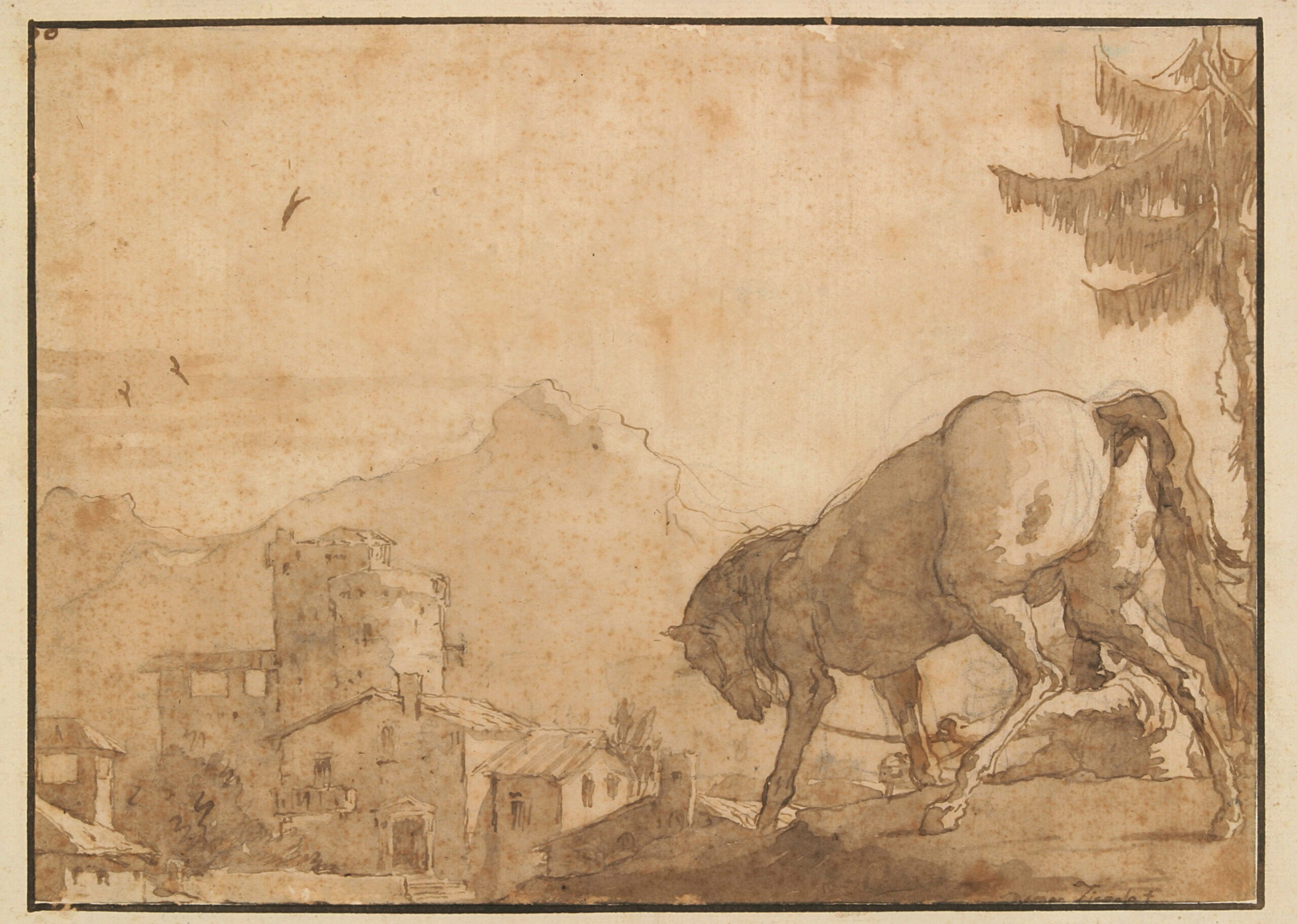
Giandomenico Tiepolo, Cavallo in un paesaggio con edifici, Venezia, Fondazione Giorgio Cini, Gabinetto dei disegni e delle stampe

Giandomenico Tiepolo, Cavallo in un paesaggio con edifici, Venezia, Fondazione Giorgio Cini, Gabinetto dei disegni e delle stampe
Landscape drawing has long been regarded as an amateur pastime or exercise of compositional skills at the service of painting. The orientation of more recent studies towards issues of artistic practices and the materiality of
works has made it possible to explore landscape drawing as an autonomous artform or as a rendering of the experience of nature. After all, drawings and prints of landscapes produced by artists such as Leonardo and Dürer,
Rembrandt, Cozens and Fragonard have continued to fascinate the public for centuries. On this theme, the Institute of Art History, with the support of the Tavolozza Foundation, is promoting a conference (curated by Camilla Pietrabissa and Elisa Spataro) that sets out to examine the complexity of this artistic manifestation by focusing on its material and aesthetic aspects.
From the media and the tools used to observe and record nature and urban spaces on paper to the assemblage of albums and the innovation of printing techniques, the two study days aim to demonstrate how the most recent research is shaping the history of landscape imagery, challenging traditional historiographical narratives. Among the various aspects that the conference intends to address – and which will be the focus of the speakers selected through a call for papers – are the notion of drawing from real life or ‘from nature’ in relation to artistic practices and experiences; landscape drawing materials: drawing media and tools; the practices of collecting individual sheets, assembling and dispersing notebooks and albums of landscape drawings; compositional schemes, perspective and viewpoints on the landscape; as well as the use of optical instruments and other technical devices.

Giandomenico Tiepolo, Cavallo in un paesaggio con edifici, Venezia, Fondazione Giorgio Cini, Gabinetto dei disegni e delle stampe